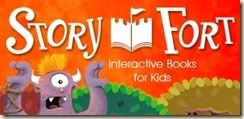So, from what I understand these are the first things you should work with your child on using Montessori. However, as most readers know, I do not follow the steps, per say. I will admit that I've tried and it has led to frustration for both myself and my daughter. I like the lessons but feel the steps are just too much. HOWEVER, I do believe some precision is good. (For example, when doing pouring beans work I do focus on if a bean is spilled but rather ignore the other TWENTY-SIX steps to pouring. So...I'm going to share with you how we basically do the following....
PERIOD ONE
Practical:
- Dry Pouring between two jugs-Basically on a tray I present my daughter with two little pitchers on a tray. The tray on the right has beans in it. I start by showing her how to pour the beans in the other pitcher several times. Then I let her practice pouring the beans. If a bean spills (in a nice voice (I feel like harshness or criticism will lead to a dislike of learning) that may even be a little funny I say "Uh-oh we spilled a bean! Why don't we try again. Let's try to keep that silly bean in the pitchers."
- Opening and closing containers: I already covered this in a previous post but here it is again: This is a great activity for our little toddlers. Really, all you need to do is collect several items that the little ones can practice opening and closing. Try to get as many different kinds of lids and jars as possible (screw on, pry open, and etc..). Begin by introducing the basket of different jars to your child and showing them how to open the jars (grasping the lid with your dominant hand while your other hand holds the bottle for example).What I want my daughter to learn from the open/close activity is just that-to open and close! Basically, to help her developing little motor skills and to increase independence. I think showing her the bottles, showing her how to open them, and then letting her explore with them is enough.Often, I put a little something inside of the jars. Again, that may not be the usual way of doing this activity. However, I find that if I put some stickers, playdough, or a small book inside of the jars she is more likely to stay with the activity and enjoy it more.the containers I have inside of the basket (of course all containers are empty of product and have been washed): beauty cream container with screw on lid, empty nail polish bottle, baby food container, empty aromatherapy bottle, jewelry box with snap lid, coin purse that snaps, zip coin purse, box with lift off lid, miniature canning jar, travel soap box, film canisters, clear plastic trading card holder. Again, this is something very easily made yourself. It was one of the first Montessori activities I introduced.
- Dressing Frames:Buttoning: These are a pretty cheap Montessori item to buy from a Montessori store but if you want to make them it is simple. Simply purchase some frames from a $1 store. Staple on an old child's shirt. It's as simple as that. Start by showing your child how to undo the buttons all the way down. Pay attention to holding the button in your right hand and the fabric in your left hand. Tilt the button a little and slide it through. Next, simply show your child how to button. Next, let the little one have a try. 
-Sweeping:Several books recommend sweeping up sawdust. I put this activity off for a long time because I don't have sawdust readily available. Instead we use other objects such as beans, rice, or confetti. Start by gathering the following materials: a child sized broom, dustpan and brush, small container of confetti ( or other material), and a wastebasket. I draw a square on our tile kitchen floor, rather than using tape. The square indicates to her where she is aiming the objects being swept up. I tell her "Watch me sweep it. Watch close and then you can have fun sweeping." When showing her how to sweep, my strokes are rather slow and deliberate: down, L to R, and then up. Then, I show her how to sweep it into the dustpan and dump it in the trash. (This step is normally 34 steps so this is much shorter but my point is to teach her independence and it this has worked well for us in achieving this goal). Oh I almost forgot-afterwards she cleans up the chalk using a wet mop. Remember the big thing in this activity is teaching the child independence. My daughter loves to do this! We don't have the most "Montessori Appropriate broom" as we have this Leaps and Bounds broom that talks. However, it is the perfect size.
Handling A Book: This lesson is basically about grace and caring for/respecting books. Basically have 5 hardcover books on a bookshelf with their spines facing outward. Tell your child-"Watch me carefully and then you can have a turn. I'm going to remove a book." Indicate the book you like by touching its spine and say "I'd like to look at this book." Using your thumb and index finger, pinch the top of the books spine, pull it downward, and then firmly grasp it. Lay the book down on a table quietly, making no sound. Look at the book a little. Show the child how to gently feel the corner to make sure only one sheet has been grabbed. When done indicate, "I think I'm done with this book and I will put it away." Simply put it away with grace in a vacant spot. Now let your child know it is their turn. Believe it or not there are ALOT more steps to this one--but I just see it as unnecessary. I feel, but again am no expert, that if you show the child how to remove the book with grace, it should be enough. I basically just pay attention that they remove the book gently, put it on the table silently, and place it back neatly. During this time I talk with her about how wonderful books are and how we should always respect them so that they say nice and we might always enjoy them.
Saying Thank You:Out of any skill, I most want my child to be courteous. I can not stand it when I child doesn't say thank you, excuse me, or etc. Currently, she does a really good job with courtesy work. Seriously, I'd rather her be courteous than know any letters, numbers, and etc. I will admit that I do judge a person's character somewhat based on their level of courtesy. If I say thank you and a "Your Welcome" is not returned, I will likely remember the incident. We don't work on this too much now because it is mastered but I simply started by handing her objects and when she received them saying, "Please say thank you when someone hands you something". Then I went on to show how to thank someone when they say something nice/do something nice for you. Consistency is the key.
Walking The Line: This is helpful in both developing balance and quieting the mind. Use tape to make an eclipse with 2 straight sides and 2 curved edges. We have our line permanent on a floor of our home guests do not see. I play some calm music while walking the line. The first step is normal walking. When this is successful move on to teaching them to walk heel to toe. Step 3 involves carrying objects in this sequence: hand flag/bell---glass of water---2 different objects from this list--all of the above with a basket on head. 
Silence Game: We definitely do not have this game down pat and any suggestions are welcome! You start by telling your child you are going to play the silent game, that their body has to be quiet and they can't talk. Have them listen for quiet noises like breathing, birds chirping, and etc.
Cylinder Blocks: This helps with visual discrimination of size, prepare for writing, and developing math ability. Wow, these are so expensive to buy!! We still don't have any yet. (On sale right now at a store they are $85, marked down from $105.00). Since we have never used them, I can't say much about them. I did find these for only $15.00; They aren't the same thing but it seems somewhat close at least. I think a socket set could be used to mimic this activity but I'm still trying to figure it out.
Pink Tower: First, I don't really get why THE pink tower beats other similar towers out there such as this one for $15 instead of $60+ for a true pink tower. The only thing I can think of is extension work with the brown stair. I'm even cheaper than this though, people. I feel like we already have enough stacking/size sorting toys. I found a download for the pink stair, where you prink out the pattern and fold into box shapes. If interested, the pattern is here. I really am not sure yet, what to think about this one.Anyway, the idea is to help the child to judge sizes, fine motor control, mathematics foundation, and some language. I simply have her build the tower. If it is incorrect, it will fall down. See, this is why I don't see why you HAVE to have a pink tower. Whether it is a paper tower or a $60 perfect pink tower, they both fall down if not build correctly...Sorry but some Montessori things seem a little "culty" and not so much about the actual learning of concepts.
Paper Pink Tower Vs. Wooden Pink Tower; Hmmm...practically free vs.. $60. Is it that much different? Now...of course if I had a lot of money I'd go with the $60. But in the meantime I'll stick to the knock off version or paper version. Probably the knock off version because obviously it holds up better...
-























5 comments:
Just my opinion but I think the Pink Tower is just lovely and a necessity in the classroom. However in your home a similar stacking/nesting block toy works fine. Here is my post on this subject. http://sjbacb.blogspot.com/2008/09/how-we-made-it-work-for-us_03.html
I am enjoying your blog!
Great post! Thank you for taking the time to share with us! It's wonderful that we can all connect and share ideas through blogging! :)
What I love about the pink tower is the beauty and simplicity of its design- each block is larger in all dimensions by the unit of the smallest block (one cm). Children will absorb that relationship which will help them with measuring later. Of course we don't use metric in the US, but other stacking toys won't necessarily maintain that kind of proportion. That said, I did make mine a natural wood tower, not a pink one. I do have two older boys, and there's no reason for it to be pink! I agree with that aspect of your 'culty' comment.
What's interesting is that Maria Montessori never wanted there to be only on kind of apparatus- that's why she didn't make a textbook to teach her method. She wanted people to invent their own methods of teaching- she would have applauded your creativity!
We play "Quiet as a Mouse" at home with the 7 and 5 yr olds. I had to add a point system because if either made a noise, they would consider the game over. So the object of the game is to receive the least points. Sometimes it causes crying but overall it has been fun and useful. We use it sometimes when we need to get going but the kids are so excited, they can't focus on getting their shoes and jackets on. Quiet as a Mouse speeds up their actions and helps them focus.
With the pink tower, the proportions are an integral part of the material. People who are good at woodworking/cardboard crafting can make it themselves that way. I have the paperworking skills to fold boxes the right size, but not the parenting skills (or desire) to consistently keep my toddler from trying to fold paper shapes into "boats! hat!".
What I wish someone would've come out with is a cardboard tower kit, where you get a packet of cardboard with the various squares ready to punch out and fold up with little tabs to latch everything together.
The other factor for me on not getting the nesting boxes set was in watching my daughter playing with stacking other nesting boxes. She'd end up with small boxes hidden under medium boxes.
Just another perspective for all the people who are looking around deciding what to do with acquiring materials. =)
Am a bit confused about what you said about the tower falling over. When I've seen videos of kids building the pink tower, when they get the blocks out of order the tower just looks odd, it doesn't fall down.
Post a Comment